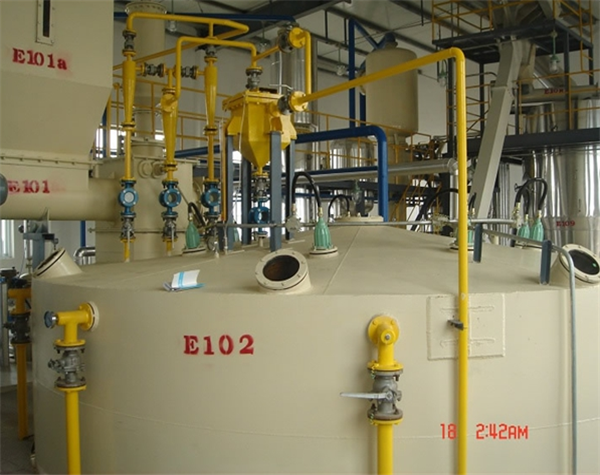
1. The concept of oil leaching
The operation of separating the required components according to the different solubility of the components in the selected solvent is called extraction. Extraction is divided into solid-liquid extraction and liquid-liquid extraction. For example, extracting sugar from sugar beet with water, brewing tea with boiled water, and extracting fat from embryos with light gasoline, etc., all belong to the category of solid-liquid extraction. Traditionally, people refer to solid-liquid extraction as leaching. In the oil leaching process of the leaching equipment, the solid material embryo is immersed in the solvent, and the oil in the material embryo is dissolved in the solvent. This process is the mass transfer process of the oil from the solid phase to the liquid phase, and the mass transfer process uses The diffusion effect of the material is realized.
2. The basic way of diffusion
When the fluid is static or stagnant, the transfer of matter is carried out in the way of molecular thermal motion, which belongs to molecular diffusion. When the solvent and the embryonic material are in relative motion and turbulent flow during the leaching process, there is convective diffusion in the mass transfer mode. It can be seen that the leaching process of the leaching equipment includes two forms of molecular diffusion and convection diffusion.
(1) Molecular diffusion
Molecular diffusion is the transfer of matter in the form of molecular thermal motion. When the material embryo comes into contact with the solvent, the oil molecules permeate out of the material embryo in a disorderly thermal motion and diffuse into the solvent. Correspondingly, the solvent molecules also continuously penetrate into the oil to dissolve with the oil molecules. In this way, a solution (i.e. mixed oil) is formed in the material embryo and in the solvent. At the beginning, the oil concentration in the mixed oil of the two parts inside and outside the embryo differs greatly. Gradually, the oil molecules diffuse from the area with higher concentration to the area with lower concentration, and finally the concentration of the two parts tends to be balanced. In the case of stable diffusion, the law of molecular diffusion can be described by the basic equation of molecular diffusion, namely:
Dm=-DF·(dc)/(dx) dτ
In the formula: dm——the amount of substance diffused through the diffusion area F;
D——Molecular diffusion coefficient, which means the amount of substance passing through a unit diffusion area in a unit time when the concentration gradient is equal to 1.
F——Diffusion area (contact area between material embryo and solvent);
(dc)/(dx)——The concentration gradient of the diffused substance along the diffusion direction;
dτ-the diffusion time experienced by the substance.
It can be seen from the above formula that the larger the diffusion area F, the greater the concentration gradient, and the longer the diffusion time, the greater the amount of material diffused through the diffusion area F. The negative sign in the formula means that the material transfer is carried out in the direction of decreasing concentration. For oil leaching, in order to obtain a good leaching effect, it is necessary to increase the contact area between the raw material and the solvent (such as oil rolling and crushing of the cake will increase the contact area), and increase the concentration of mixed oil between the nozzles of the extractor Poor and ensure sufficient leaching time, etc.
(2) Convection and diffusion
Convective diffusion refers to the transfer of substances in relative motion. It is the solution that moves from one place to another at a certain speed with a small volume under turbulent flow. The substances that are dissolved in the flow are transferred, and finally the concentration of each place tends to be uniform. The law of convection and diffusion shows that the amount of diffused material is proportional to the diffusion area, the concentration difference of the diffused material, and the diffusion time. It can be seen that the diffusion area, the concentration difference of the diffusion material, and the diffusion time will all affect the convective diffusion process, but for the mass transfer process to proceed in this way, the key is that the fluid must be in a turbulent state. In fact, the leaching process is a combination of molecular diffusion and convection diffusion. The oil leaching process can be divided into three steps microscopically: first, the molecular diffusion of oil molecules from the inside of the embryo to the laminar boundary layer; then the molecular diffusion of oil molecules through the laminar boundary layer; and finally the oil from the laminar boundary layer Convection diffusion moving into the main flow of the mixed oil. It should be pointed out that the transfer of substances during molecular diffusion is driven by the kinetic energy of molecular thermal motion, so increasing the temperature can increase the rate of molecular diffusion. The convection diffusion mainly relies on the external energy to make the main flow of the mixed oil in a turbulent state. Therefore, the use of the liquid level difference or the pressure caused by the pump to increase the relative movement speed of the mixed oil and the material embryo can increase the convective diffusion rate.
In summary, the oil leaching process of the leaching equipment is closely related to factors such as the surface area of the raw material, the concentration difference, the leaching temperature, the leaching time and the flow state of the mixed oil.
Copyright © Henan Zhongxing Grain And Oil Machinery Co.,Ltd. All Rights Reserved. Powered by MetInfo